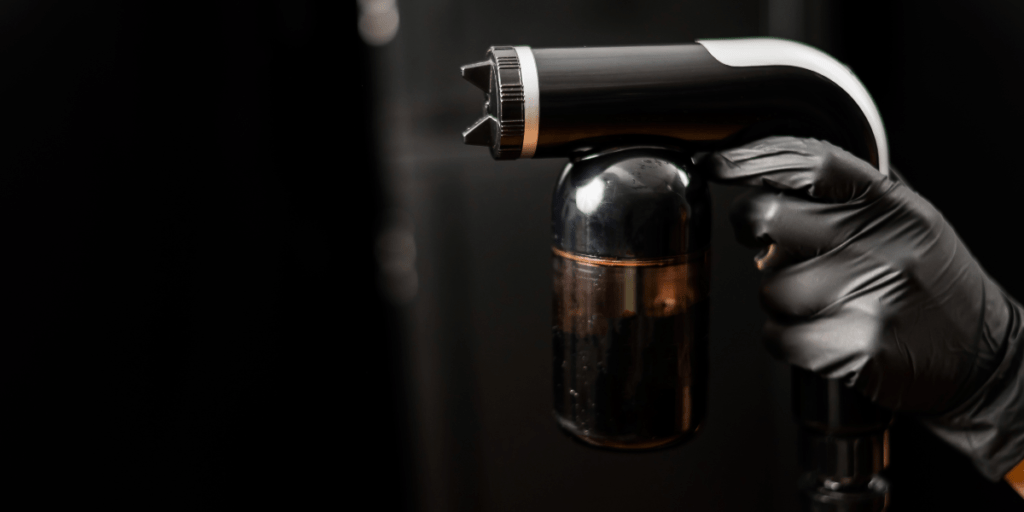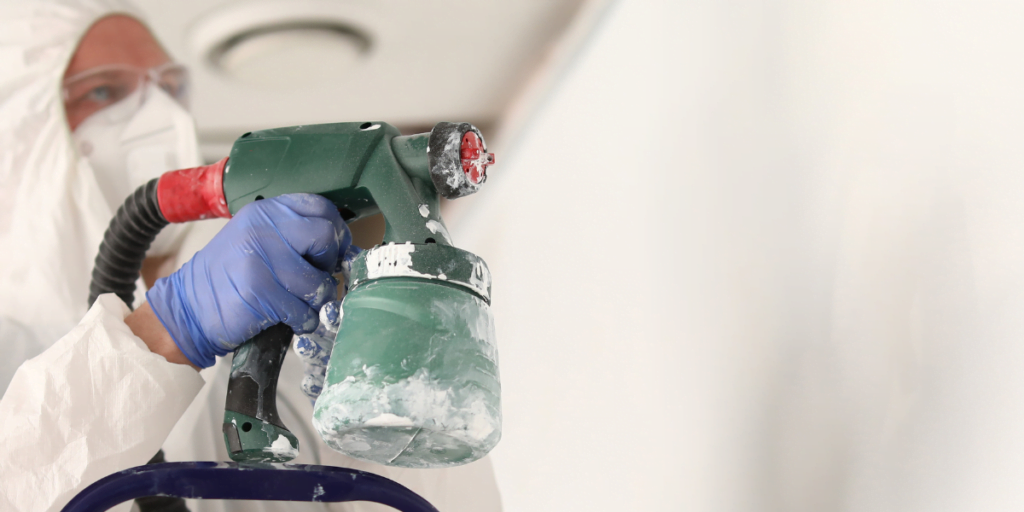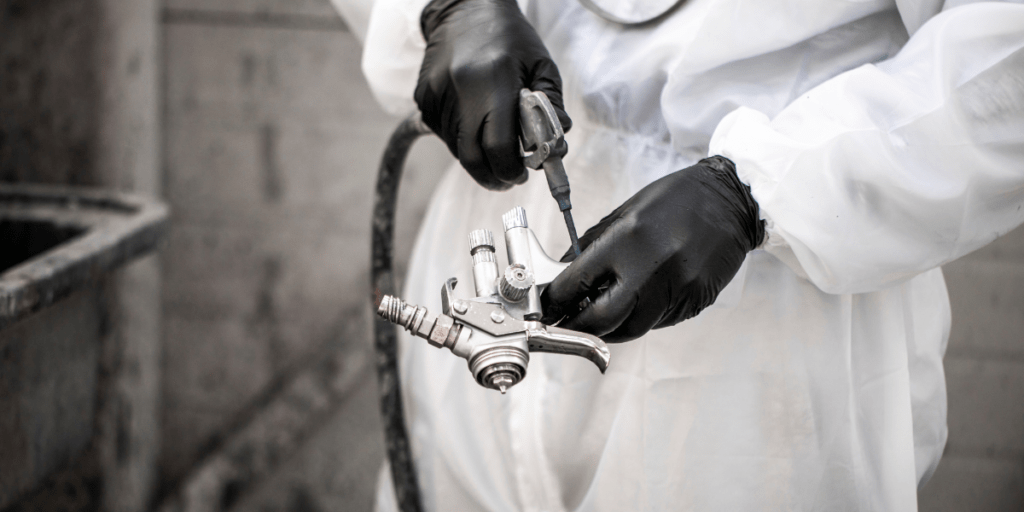I. Types of Air Compressors for Paint Guns
When it comes to choosing an air compressor for your paint gun, there are three main types to consider:
1. Reciprocating Air Compressors
Reciprocating air compressors are popular for DIY enthusiasts and small-medium scale projects. They use pistons to compress air, which is stored in a tank. These compressors are relatively affordable and portable, making them a practical option for occasional use. However, they can be noisy and require regular maintenance.
2. Rotary Screw Air Compressors
Rotary screw air compressors are designed for continuous and heavy-duty use. They use two rotors to compress air, eliminating the need for a storage tank. These compressors are known for their efficiency and durability, making them suitable for professional painters and industrial applications. While they are more expensive than reciprocating compressors, they offer a longer lifespan and quieter operation.
3. Centrifugal Air Compressors
Centrifugal air compressors are typically used in large-scale industrial applications. They work by converting kinetic energy into potential energy to compress air. These compressors are highly efficient and offer a continuous supply of compressed air. They are known for their high flow rates and adaptability to varying demands. However, they are the most expensive option and require specialized installation and maintenance.
Choosing the right air compressor for your paint gun depends on several factors such as the scale of your projects, budget, and noise considerations. Consider your specific needs and the following features when making a decision:
Tank Size: Larger tanks provide a more stable air supply, reducing the need for the compressor to run continuously. Consider the capacity of the tank based on the size and duration of your painting projects.
CFM (Cubic Feet per Minute): CFM determines the air volume the compressor can deliver. Matching the air compressor’s CFM rating with your paint gun’s requirements is essential. Consult the manufacturer’s recommendations for your specific paint gun model.
Pressure Rating: The pressure rating, measured in PSI (Pounds per Square Inch), indicates the maximum pressure the compressor can deliver. Check the requirements of your paint gun and ensure that the compressor can provide the necessary force.
Noise Level: If noise is a concern, consider compressors with lower dB ratings. Rotary screw compressors tend to be quieter than reciprocating compressors.
Maintenance: Different types of compressors require varying levels of care.
Refer to the manufacturer’s specifications and recommendations for your specific paint gun and consult with professionals if needed. Choosing the right air compressor will ensure optimal performance and excellent
II. Factors to Consider When Choosing an Air Compressor for Paint Guns
When choosing an air compressor for paint guns, several important factors must be considered. Here are the key factors that can help you make the right decision:
1. Air Pressure (PSI)
Air pressure is critical when choosing an air compressor for paint guns. The air pressure, measured in pounds per square inch (PSI), determines the force with which the air is delivered to the paint gun. Different paint guns have different pressure requirements, so choosing an air compressor to provide the necessary pressure for your specific paint gun is essential.
2. Air Volume (CFM)
Another important factor to consider is the air volume that the air compressor can deliver, measured in cubic feet per minute (CFM). The air volume determines the air the compressor can supply to the paint gun consistently. The higher the CFM rating, the more power you will have for continuous painting without disruptions.
3. Tank Size
The air compressor’s tank size determines how much air it can store and deliver without continuously running the compressor motor. A larger tank size provides a larger supply of compressed air, reducing the frequency of motorcycling. Consider your painting needs and choose an air compressor with a tank size that can meet your requirements.
4. Power Source
Different sources, including electricity, gasoline, or batteries can power air compressors. The power source is an essential consideration based on your specific needs. Electric-powered air compressors are typically more convenient and require less maintenance, while gas-powered ones offer more portability but may require more maintenance.
5. Portability
Depending on your painting projects, you may require a portable air compressor that you can easily move around. Consider the portability features, such as the weight, handle design, and wheels, to ensure that the air compressor suits your needs.
When choosing an air compressor for paint guns, it’s crucial to consider factors such as air pressure, air volume, tank size, power source, and portability. Take the time to research and compare different models to find the one that best suits your specific painting requirements.
For more information on air compressors, you can visit here.

Recommended Air Compressors for Paint Guns
When it comes to using a paint gun, having a reliable air compressor is crucial. The right air compressor will provide a consistent supply of compressed air, ensuring smooth and even paint application. Here are some recommended air compressors for paint guns that you should consider:
1. California Air Tools CAT-1P1060S
The California Air Tools CAT-1P1060S is a lightweight, portable air compressor perfect for paint gun applications. With a maximum pressure of 120 PSI, this compressor can deliver a steady airflow for smooth paint. It operates quietly at only 56 decibels, making it ideal for indoor use. The CAT-1P1060S also has a 1-gallon steel tank and an oil-free pump, reducing maintenance and ensuring durability.
2. Campbell Hausfeld DC080500
The Campbell Hausfeld DC080500 is another excellent option for paint gun use. This air compressor has a maximum pressure of 125 PSI and a large 8-gallon tank, providing a longer operating time without needing to refill constantly. It features a durable oil-lubricated pump and a powerful 1.0 HP motor, ensuring reliable performance. The DC080500 also comes with a convenient handle and wheels for easy transportation.
3. Makita MAC2400 Big Bore
The Makita MAC2400 Big Bore is a heavy-duty air compressor suitable for demanding paint gun applications. With a powerful 2.5 HP motor and a maximum pressure of 130 PSI, this compressor can easily handle larger painting projects. It features a cast iron pump with a big bore cylinder and piston, providing faster recovery and improved performance. The MAC2400 also has a large automotive-style filter for increased air intake efficiency.
4. Bostitch BTFP02012
The Bostitch BTFP02012 is a compact, lightweight air compressor perfect for smaller paint gun applications. With a maximum pressure of 150 PSI, this compressor delivers high-quality performance. It features an oil-free pump, reducing maintenance and ensuring clean operation. The BTFP02012 also has a 6-gallon tank and a high-efficiency motor for quick and easy start-ups.
These recommended air compressors for paint guns offer reliable performance and durability. Each compressor has unique features and specifications, so consider your specific painting needs and budget when choosing the right one.
For more information on air compressors and their applications, refer to Wikipedia.

Features to Look for in an Air Compressor for Paint Guns
When choosing an air compressor for paint guns, it’s important to consider certain elements to ensure optimal performance and durability. Here are some key factors to look for:
1. Oil-Free Operation
An oil-free air compressor is highly recommended for paint gun applications. Traditional air compressors require regular oil changes and maintenance, which can be messy and time-consuming. An oil-free compressor eliminates the need for oil, ensuring clean and contaminant-free air for painting. It also reduces the risk of oil particles mixing with the paint, resulting in a smoother and more professional finish.
2. Noise Level
While using a paint gun, low noise levels are essential to maintain a comfortable working environment. Look for air compressors with noise-reduction features, such as insulated tanks or noise-dampening materials. This will minimize the noise during operation and prevent workspace disruptions or distractions.
3. Durability and Construction
Durability is a crucial factor when selecting an air compressor for paint guns. Look for models made from high-quality materials that can withstand the demands of continuous use. It’s also important to ensure that the compressor has a strong and sturdy construction to resist vibrations and impacts. A durable compressor will last longer and provide consistent performance over time.
4. Additional Accessories
Additional accessories can enhance the usability and convenience of an air compressor for paint guns. Here are some features to look for:
- Pressure regulator: A pressure regulator allows you to adjust the air pressure according to the requirements of different paint jobs, ensuring precise and consistent results.
- Water trap: A built-in water trap or filter is essential for removing moisture from the compressed air, preventing it from affecting the paint application.
- Multiple outlets: Having multiple outlets on the compressor allows for the simultaneous use of numerous paint guns or other air tools.
- Portability: Consider the weight and size of the compressor, as well as the presence of handles or wheels, for easy transportation and mobility.
Remember to carefully evaluate these features and compare different models before deciding. It’s also helpful to seek advice from paint professionals or read customer reviews to ensure that the chosen air compressor meets your paint gun requirements.
In conclusion, when choosing an air compressor for paint guns, look for oil-free operation, low noise levels, durability, and additional accessories. These factors will ensure optimal performance and convenience for your painting projects.

How to Properly Use an Air Compressor for Paint Guns
Painting with a paint gun can be a rewarding DIY project, but having the right equipment, including an air compressor, is essential. Using an air compressor for paint guns requires proper setup and maintenance to achieve the best results. Here’s a step-by-step guide on how to use an air compressor for paint guns.
1. Set Up and Prepare the Compressor
- Start by selecting the appropriate air compressor for your paint gun. Consider tank capacity, pressure range, and CFM (Cubic Feet per Minute) requirements.
- Ensure that the air compressor is placed on a stable and level surface.
- Connect the air compressor to a power source and make sure it is turned off.
- Attach an air filter or moisture separator to prevent debris or moisture from entering the paint gun.
- Connect the hose from the air compressor to the paint gun, securely tightening all connections.
2. Adjusting Air Pressure and Volume
- Before starting, consult the paint gun’s user manual to determine your specific paint material’s recommended air pressure range.
- Turn on the air compressor and allow it to build up air pressure.
- Adjust the air pressure regulator on the compressor to match the recommended pressure range.
- Use the paint gun’s volume control knob to adjust the airflow to achieve the desired paint flow rate.
- Ensure the air pressure and volume are set correctly and consistently throughout the painting process.
3. Cleaning and Maintenance Tips
- Regularly clean and maintain your air compressor to ensure optimal performance. Follow the manufacturer’s instructions for cleaning, oiling, and changing filters.
- Drain any accumulated water from the air compressor tank to prevent moisture from affecting paint quality.
- Store your air compressor in a clean and dry environment to avoid dust or debris entering the system.
- Periodically inspect the hoses, fittings, and connectors for any wear or damage. Replace any damaged components promptly.
- Refer to the paint gun’s user manual for specific cleaning instructions and recommended maintenance procedures.
Using an air compressor for paint guns requires attention to detail and proper care to achieve professional-looking results. You can enjoy smooth and efficient painting projects by following these steps and maintaining your equipment.
Remember, safety should always be a priority when using air compressors. Wear appropriate protective gear, such as safety glasses and gloves, and refer to the manufacturer’s safety guidelines for your specific air compressor model.
For more information on air compressors and their various uses, visit https://en.wikipedia.org/wiki/Air_compressor.

VIII. Conclusion
Key Considerations for Choosing the Right Air Compressor for Your Needs
Choosing the right air compressor for your paint gun is crucial to ensure optimal performance and a smooth painting experience. Here are some key considerations to keep in mind when making your decision:
1. CFM (Cubic Feet per Minute): The CFM rating of an air compressor indicates the volume of air it can deliver per minute. For paint gun applications, it is recommended to have an air compressor with a CFM rating that meets or exceeds the requirements of your paint gun. This ensures a consistent and steady flow of air.
2. PSI (Pounds per Square Inch): The PSI rating refers to the pressure at which the air is delivered. Most paint guns require a minimum PSI of 30-50 for optimal performance. Ensure the air compressor you choose can provide sufficient PSI to meet your paint gun’s requirements.
3. Tank Capacity: The tank capacity of an air compressor determines how long it can sustain a steady flow of air before the motor needs to kick in and refill the tank. A larger tank capacity is beneficial for applications that require continuous spraying, as it reduces the frequency of motor operation and allows for a more consistent flow of paint.
4. Noise Level: Consider the noise level of the air compressor, especially if you will be using it in a residential area or shared space. Look for air compressors with noise-reduction features or specifically designed for quiet operation.
5. Portability: If you need to move your air compressor frequently or take it to different job sites, consider its weight and portability features. Look for models with handles, wheels, or compact designs that make it easy to transport.
Check the manufacturer’s recommendations and specifications for your specific paint gun model to ensure compatibility and optimal performance.
In conclusion, choosing the right air compressor for your paint gun requires considering factors such as CFM, PSI, tank capacity, noise level, and portability. By doing a thorough research and assessing your specific needs, you can find an air compressor that will provide consistent and reliable airflow for your painting projects.
Remember, the right air compressor can make a significant difference in the quality of your paint job, so choose wisely, and happy painting!

